Celtic mythology – also known as Gaelic and Gaulish mythology – is the collection of myths pertaining to ancient Celtic religion. Many of the most famous Celtic legends come from early Irish myths and include the gods of Ireland. However, in history, there were six Celtic nations whose mythologies are included in the broader Celtic mythos.
From the many gods and the bold heroes of Celtic mythology, we’ll be covering it all here in an effort to understand better the impact Celtic mythology had on ancient civilizations.
Table of Contents
What is Celtic Mythology?
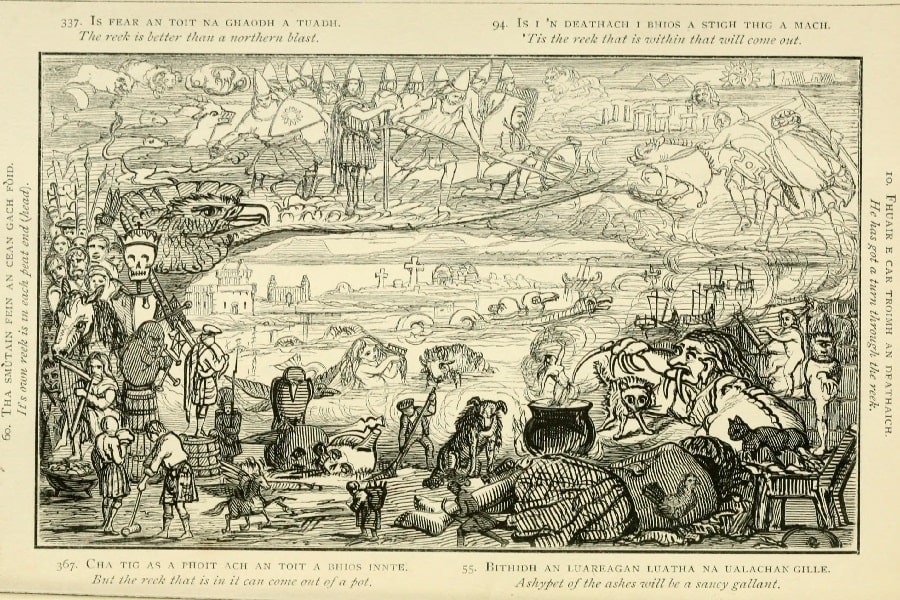
Celtic mythology is central to the traditional religion of the ancient Celts. Historically, Celtic tribes were found throughout Western Europe and within today’s Britain, Ireland, Wales, France, Germany, and areas of the Czech Republic. Celtic myths were initially written down in the 11th century by Christian monks, with the oldest collection of myths being from the Mythological Cycle. As with most cultures from the period, the Celtic religion was polytheistic.
The Celtic Pantheon
As with most any polytheistic religion, the ancient Celts worshiped a lot of gods. We’re talking about 300, plus. We know what you might be thinking: how do we know this? The secret is, we actually don’t.
Most of the Celtic mythology was shared through oral traditions. While the common man certainly knew the basics of the religion, it was up to the druids to retain serious information. This would include the gods, goddesses, and major myths. And, the druids never left behind a written record of their beliefs or practices.
Everything we “know” about the Celtic religion, its mythology, and the Celtic deities is inferred from second-hand sources and archaeological discoveries. So, while we’re pretty certain the Celtic pantheon had tons of gods, we don’t know all of them. Most names of deities are lost to history.
Here are the most well-known Celtic gods and goddesses, whose names have survived into modern times:
- Danu
- The Dagda
- The Morrígan
- Lugh (Lugus)
- Cailleach
- Brigid (Brigantia)
- Cernunnos*
- Neit
- Macha
- Epona
- Eostre
- Taranis
- Bres
- Arawn
- Ceridwen
- Aengus
- Nuada (Nodons)
There are several archetypes to be found within the Celtic pantheon, including horned deities, triple goddesses, sovereignty goddesses, and trickster gods. Some heroes, such as Cú Chulainn, are deified. On top of this, Queen Medb, the villainess of the Ulster Cycle, is oftentimes cited to be a goddess as well. This is related to a form of ancestor worship.
*Though Cernunnos is the Celtic deity, he has appeared in English folklore as Herne the Hunter
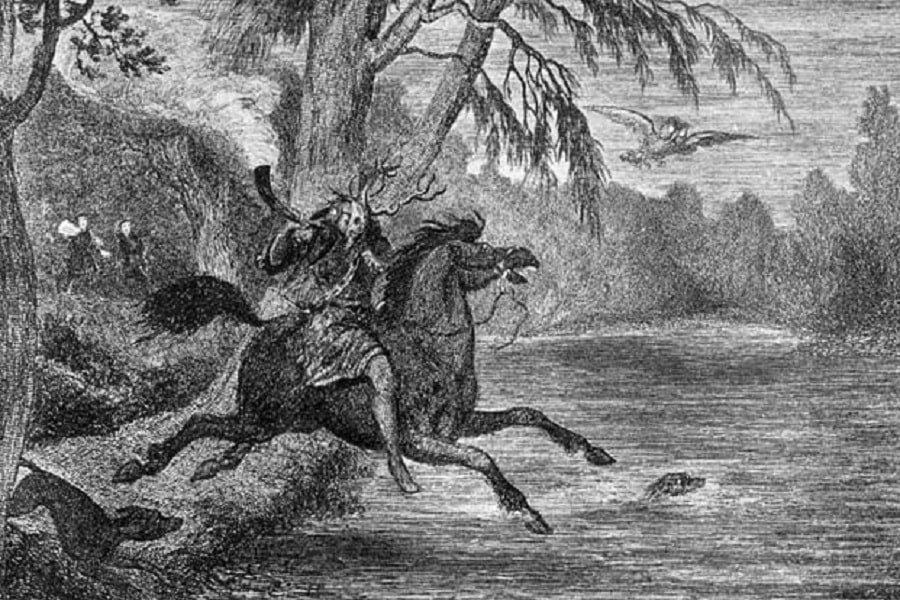
The Tuath Dé Danann
Within Celtic mythology, the Tuath Dé Danann (Tuatha Dé Danann or simply Tuath Dé) are a race of people with supernatural abilities. Kind of like the X-Men…kind of. They had super strength, and super speed, were ageless, and were immune from most diseases. Their name translates to “People of the Goddess Danu.”
It was said that the Tuath Dé came from the Otherworld. The Otherworld was a place of abundance and peace. Not only was it where these apparent divines came from, but it was also where the spirits of the dead possibly resided. The skill of the Tuath Dé earned them renowned as rulers, druids, bards, heroes, and healers. More importantly, their supernatural prowess led them to be deified within Celtic mythology.
In less fantastical accounts, the Tuath Dé are descendants of ancient Ireland’s third wave of inhabitants, Clan Nemed. One of the most vital historical sources regarding ancient Ireland, The Annals of the Four Masters (1632-1636), claims that the Tuath Dé were one of the ancient tribes to rule over Ireland from 1897 BCE to 1700 BCE. They are associated with sídhe burial mounds and faeries.
Here, we’ll list some of the most notable figures of the Tuath Dé Danann:
- Nuada
- Bres
- The Dagda
- Delbáeth
- Lugh
- Ogma (Ogmois)
- Óengus
- Brigid
- The Morrígan
- Badb
- Macha
- Nemain
- Dian Cécht
- Luchtaine
- Credne
- Goibniu
- Abcán
The Tuatha Dé Danann are usually thought to be synonymous with ancient Celtic gods. However, not all of them were. Those that we know are variants of the gods include Lugh, Ogma, Brigid, and Nuada. Besides being Celtic deities, many of the Tuath Dé were sanctified by Christian scribes in later history.
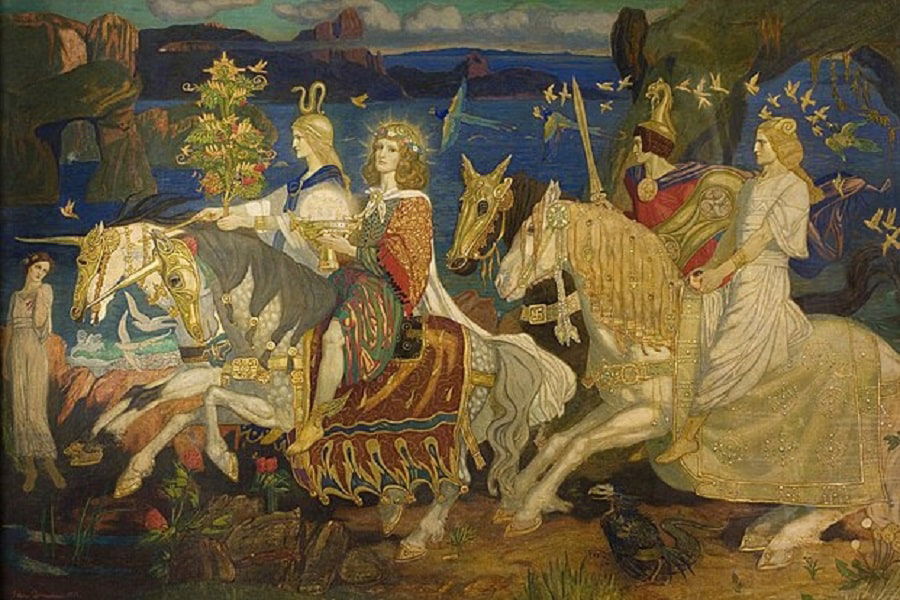
Who is the Main Celtic God?
The main Celtic god is the Dagda. He was the most powerful god and the Eochaid Ollathair (“All-Father”), called so because of his protective qualities. He is the chief god of the Celtic pantheon, holding a similar status as the Germanic Odin, the Greek Zeus, and the Sumerian Enlil.
READ MORE: The 10 Most Important Sumerian Gods and Enki and Enlil: The Two Most Important Mesopotamian Gods
Now, it can be argued that Danu, the divine mother goddess, could instead be the most important deity of the Celtic religion. After all, she is where the Tuath Dé Danann get their name as the “People of the Goddess Danu.” Though, her popularity throughout the wider Celtic world is unknown.
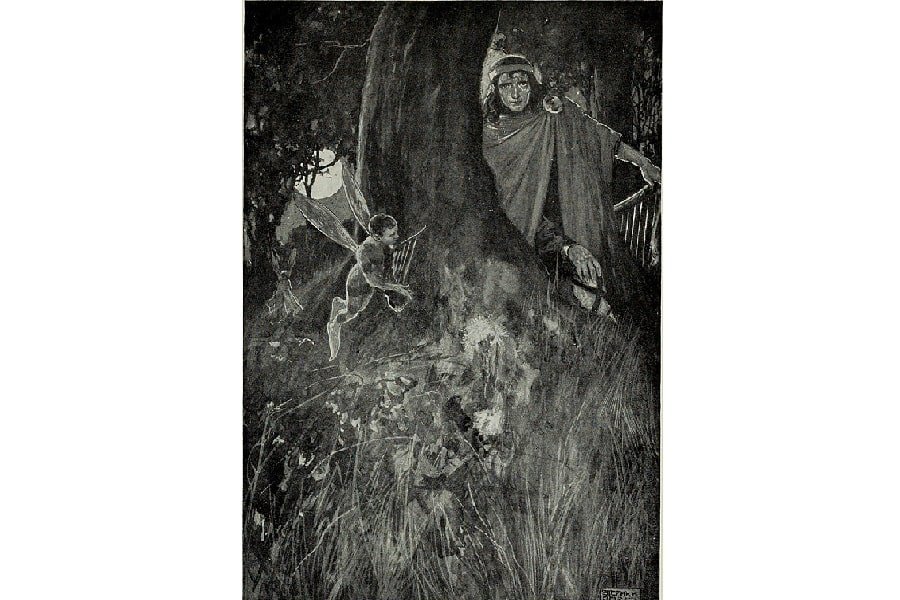
Religious Practices of the Ancient Celts
From sacrifices to annual festivals, the ancient Celts had a plethora of religious practices. After all, being a polytheistic society meant that there was a lot going into appropriate displays of worship. Druids would lead most religious services, being the valued middlemen between the Celtic gods and the common folk. More importantly, they acted as a voice for the natural world: an impossibly important motif within Celtic religion.
In the Celtic world, sacred spaces could be found within nature itself. Groves and caves were consecrated much as a Christian church would have been. You see, it is within nature that the Celtic gods were the most active. It is also within nature that one could stumble across portals to the Otherworld, Tír na nÓg, or be invited in by a whimsical resident.
Regarding the nature of Celtic sacred spaces, called nemeton (nemeta), many have been destroyed over the years. Although not always intentional, many sacred locations and sites of religious veneration have been built over during urbanization. Thankfully, preservation efforts have been made for identified sites in recent years. Some of the most famous can be found in Estonia and Latvia.
Now, not all nemeton would have been associated with druidic rites. Their religious significance to the Celtic faith, however, goes unquestioned. If not related to the druids, the nemeton held other ritualistic purposes. At some point, they may have been the sites of shrines, temples, or altars.
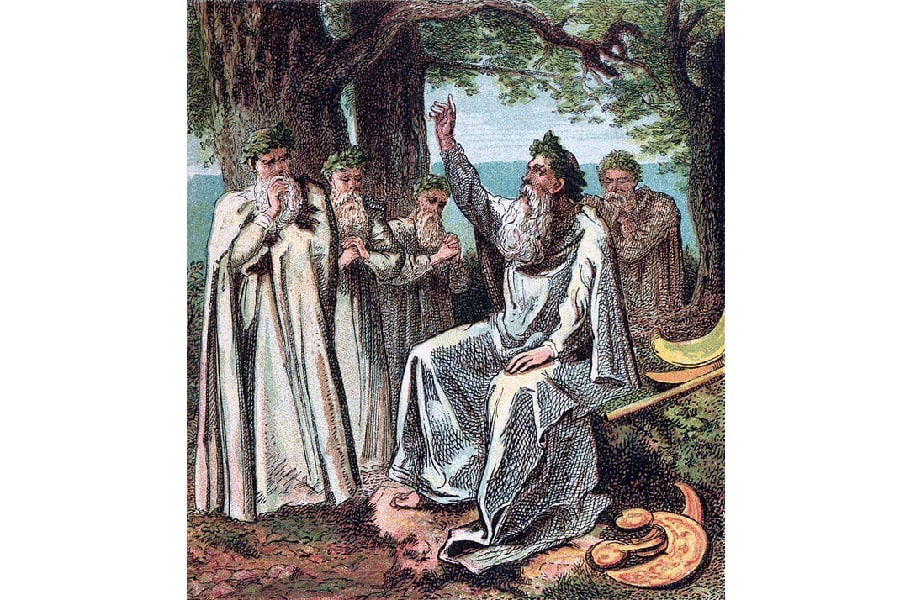
Local and Regional Cults
Cults were among the most popular ways to venerate the gods. They’d be a family affair; literally, in the case of ancestor worship. In most ancient societies, cults were dedicated to a single or tripartite deity. Taranis, the Celtic god of thunder, was a particularly popular god, with evidence of his cult being found throughout ancient Gaul.
Most all cults would have been acknowledged by the standing government and led by an experienced druid. After the Roman conquest, an immense effort was made to “Romanize” Celtic tribes, leading to the erasure of pagan cults, their religious leaders, and many Celtic gods.
READ MORE: Pagan Gods from Across the Ancient World
Festivals
Everyone loves a good party. Luckily, the ancient Celts knew just how to throw them. There would be feasts and merriment aplenty!
Bonfires held a unique place in festivals as a symbol of purification. The springtime Beltane is particularly connected to ritual bonfires. The most famous (and possibly exaggerated) description of Celtic festivals and their bonfires is the Roman record of the Wickerman. The Wickerman (not Nicholas Cage, by the way), would hold an animal and human sacrifices that would be burned alive.
Nowadays, there’s the eccentric Burning Man festival held in an American desert. No humans or animals: just a whole lot of wood. Alas, to see the reaction of an ancient Roman at such a display!
There would have been four major festivals celebrated in the Celtic world: Samhain, Beltane, Imbolg, and Lughnasadh. Each marked a seasonal change, with related festivities varying in duration and activity.
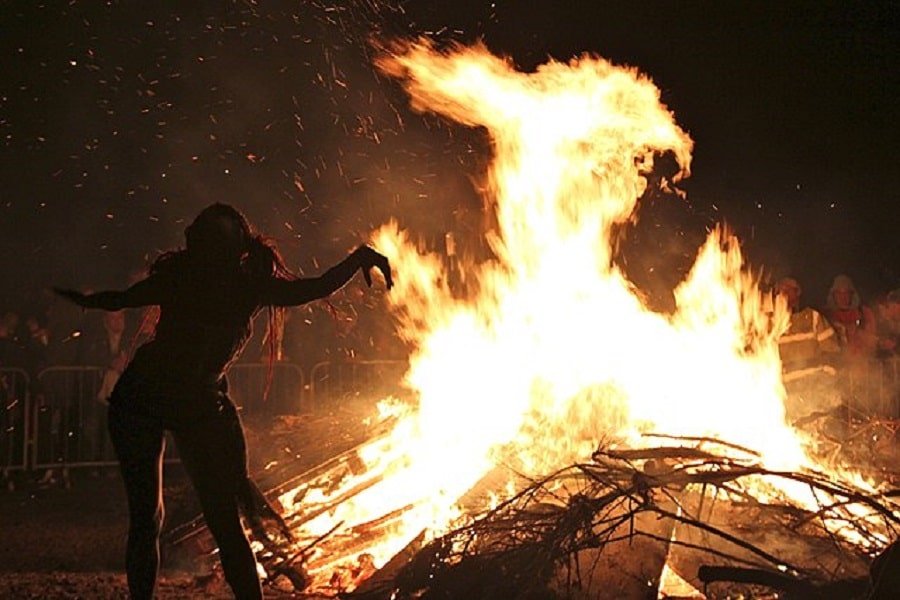
Sacrifices and Offerings
Sacrifices and offerings would have been made to the Celtic gods as a part of daily veneration. Food and other votive offerings would have been left at shrines and altars within sacred grounds. However, the type of sacrifice would depend on how auspicious the day was. Ancient Celts were believed to have made votive, animal, and human sacrifices as a part of their religion.
According to Roman sources during (and after) the conquest of Celtic nations by Julius Caesar, the Celts were known as headhunters. Not only were the heads of the dead kept, but they were preserved, displayed, and consulted. To some scholars, this has been interpreted as the head being the seat of the soul in Celtic beliefs, and that a “Head cult” developed.
Now, these are speculations drawn upon records made by those outside of the Celtic perspective. We’ll never know if the ancient Celts would decapitate bodies for offerings to the gods; though, honestly, it is unlikely.
Nowadays, we have no clue what would constitute an appropriate sacrifice. Unlike other ancient civilizations, the Celts left little to no record of their traditional religious practices. Many sources removed from the Celtic nations of the time took note of the prevalence of human and animal sacrifices. Little time was taken to understand the “why” behind the sacrifices, thereby leaving modern audiences to fill in the blanks.
What is known of human sacrifices is that kings would frequently be victims of them. Scholars theorize that such a sacrifice would occur if the weather was poor, if there were rampant diseases, or if there was famine. Apparently, it would mean that the king was doing such a poor job that the land itself was rejecting him.
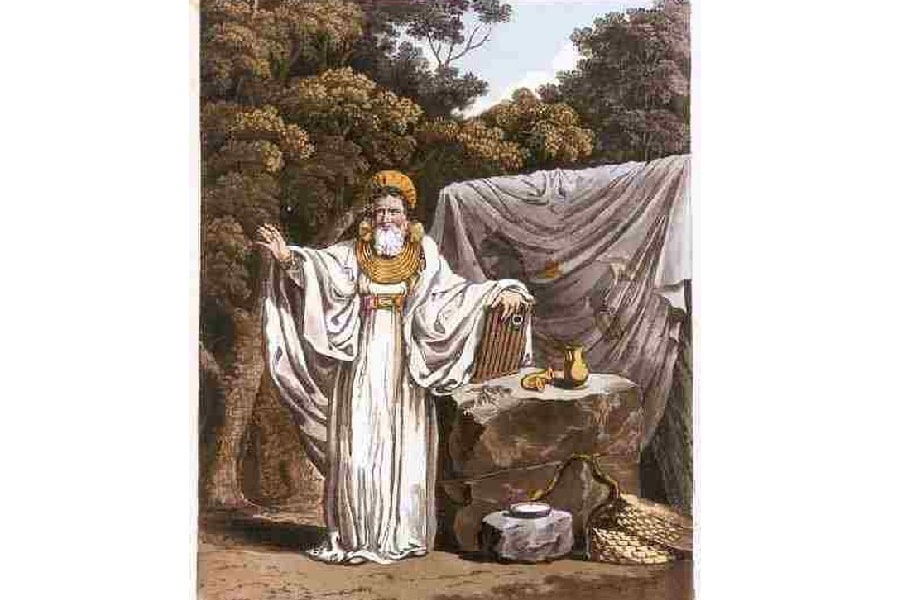
What is the Significance of a Threefold Death in Celtic Mythology?
A “threefold death,” as it has become known, is a fate reserved for heroes, gods, and kings. More or less, they goofed up really badly. So bad, they had to be killed thrice over.
The concept of a threefold death originates from Proto-Indo-European beliefs and has been evident throughout Germanic, Greek, and Indic religions. It is usually reserved for those found guilty of committing a grave offense against their society. Each “death” the individual suffered was counted as a sacrifice to a distinct god.
While still hotly debated today, bog bodies are oftentimes speculated to have suffered threefold deaths. Though none have been confirmed as kings or heroes, their deaths could have been more symbolic than literal.
Celtic Myths, Legends, and Lore
Celtic myths, legends, and lore were entirely communicated through oral traditions. The druids, pinnacles of Celtic society and valued lore keepers, never left a written record of their beliefs. That being said, we have an idea of the myths central to the Celtic religion. Favorites include the feats of Finn McCool and Cú Chulainn.
Below are some of the most beloved Celtic myths and legends:
- The Curse of Macha (The Pangs of Ulster)
- The Cattle Raid of Cooley
- The Harp of Dagda
- Oisín in Tír na nÓg
- The Tuatha Dé Danann
What is known of Celtic mythology today comes almost entirely from Christian sources. Moreover, these accounts come centuries after the Roman subjugation of the Celts after druidry was outlawed. The myths we know today are vastly different from the myths Celtic peoples were familiar with. To that extent, there are several variations of their creation myth, including…
- The story of Donn, Danu, and Primeval Chaos
- The Tree of Life
- The Giant at Creation
As with most world mythologies, Celtic mythos had major themes within each myth. These included mighty heroes, daring adventures, and wondrous magic. Of course, the gods and goddesses would make an appearance, flaunting their supernatural powers and boundless wisdom.
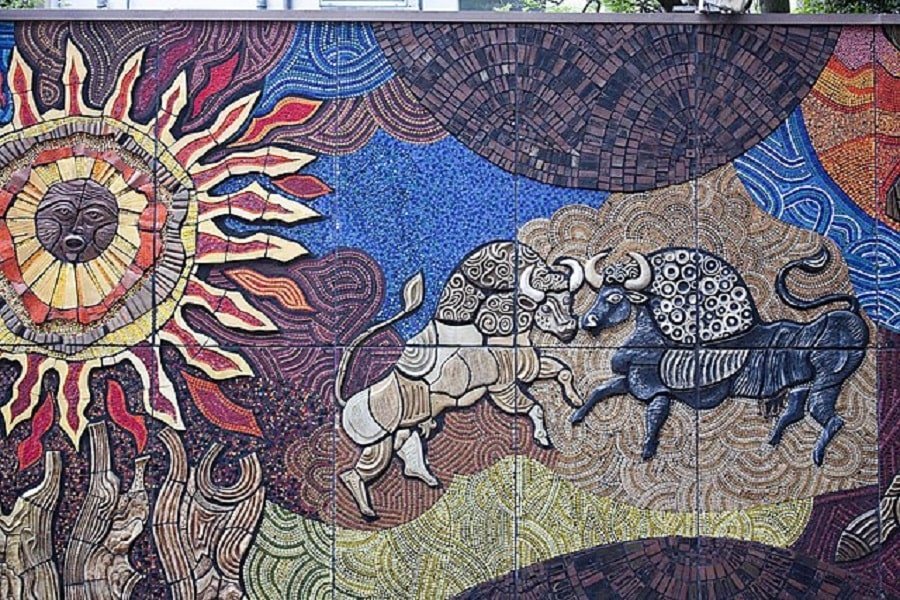
What are the Cycles in Celtic Mythology?
Generally, Celtic mythology can be organized into four distinct “Cycles.” These Cycles act as a division between certain historical and legendary events. Furthermore, the Cycles can act as a reliable timeline for Celtic history.
There are four cycles in Celtic mythology:
- The Mythological Cycle (Cycle of the Gods)
- The Ulster Cycle
- The Fenian Cycle
- The King Cycle (Historical Cycle)
Most famous myths and characters emerge during the Ulster and Fenian Cycles. The Ulster Cycle features the likes of Cú Chulainn and Queen Medb. Meanwhile, the Fenian Cycle details the exploits of Finn McCool and the Fíana. The Mythological Cycle deals with figures like the Tuath Dé, while the King Cycle leads all the way up to the (very real) Brian Boru.
What is the Most Famous Celtic Myth?
The Cattle Raid of Cooley, or the Táin Bó Cúailnge, is the most famous Celtic myth. It deals with the conflict between Ulster and Connaught over the brown bull of Cooley. More specifically, it centers on Queen Medb’s desire for more wealth by possessing the famous brown bull from the rival Ulstermen. As one could guess, the Cattle Raid of Cooley is staged during the Ulster Cycle.
Heroes of Celtic Myth
The heroes of Celtic mythology are as epic as any other hero there. You know, if you find yourself growing tired of reading all about Heracles, look no further than the Ulster hero, Cú Chulainn. They’re both crazy-powerful demigods and war heroes! Alright…in all seriousness, the heroes of Celtic mythology are slept on way too often.
Fascinating characters all around, Celtic heroes primarily represented ideals found within ancient Celtic society. They were physically strong, noble, and had an unquenchable thirst for adventure. You know, like any hero worth their stuff.
More than anything, the heroes of Celtic legend offer an explanation for ancient historical events and geographical markers. Take the Giant’s Causeway, for example, which was unintentionally created by Finn McCool. The myth of the Tain also makes more sense after we learn all about Macha’s curse.*
* Although Macha – one of the Morrígan, a Celtic triple goddess also known as the Phantom Queen – is not considered a hero, the curse she bequeathed upon the Ulstermen acts as a catalyst for the setting of the life of Cú Chulainn
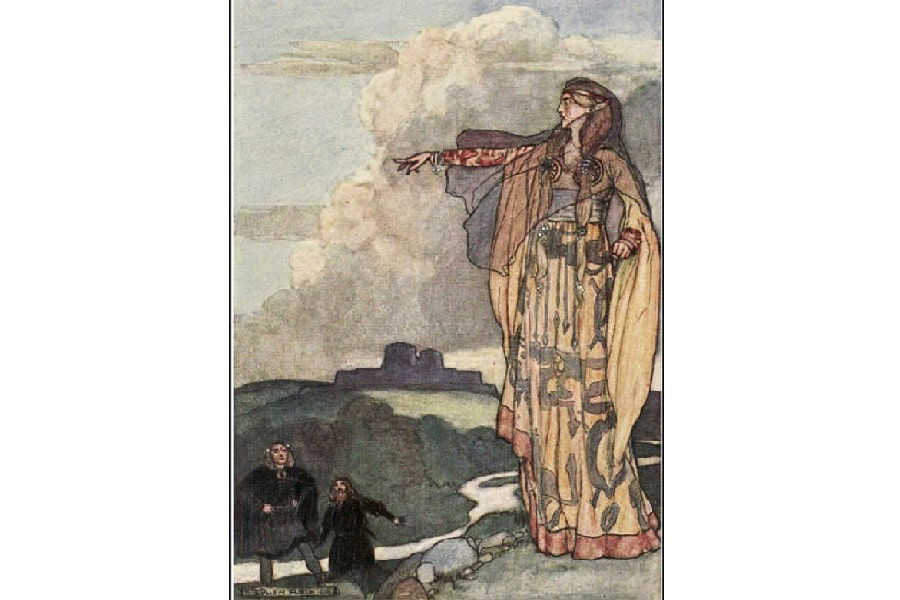
Celtic Culture Heroes and Kings
In Celtic mythology, where there are mythical heroes, there are recorded kings. Whether allies or enemies, the heroes of Celtic legend and early Irish myths won’t fail to impress the masses. The following list contains Celtic heroes and mythical kings from across Ireland, England, and Wales:
- Cú Chulainn
- Scáthach
- Diarmuid Ua Duibhne
- Finn McCool
- Lugh
- Oisín
- King Pywll
- Brân Fendigaidd
- Taliesin
- Fergus mac Róich
- Pryderi fab Pwyll
- Gwydion fab Dôn
- King Arthur
While there are many mythological heroes, Celtic culture has yet to run short of folk heroes. The Gaulish chief of the Arverni tribe, Vercingetorix, is just one of many Celtic heroes.
Mythical Creatures of the Otherworld and Beyond
Supernatural beings are staples of almost any mythology. In itself, Celtic mythology is filled to the brim with curious creatures from all walks of life. Many of these entities acted as an explanation for certain unexplainable phenomena, natural occurrences, or as a caution.
Whatever the purpose of Celtic mythical creatures, they are certainly sights to behold. Just don’t follow them to Tír na nÓg, lest you’re interested in returning 300 years late. Trust us…the Land of Joy and Abundance has its downsides.
Below is a small list of some of the mythical creatures that make up Celtic legend:
- The Faerie
- The Bodach
- Leprechaun
- Kelpie
- Changelings
- Púca
- Aibell
- Fear Dearg
- Clurichaun
- The Merrow
- Glas Gaibhnenn
- Aos Sí
- Donn Cúailnge
- Leanan sídhe
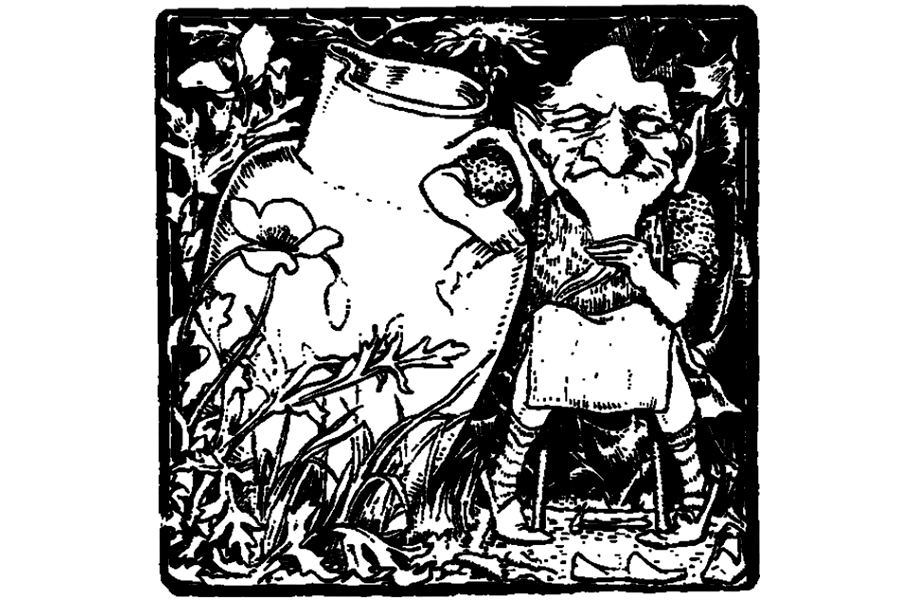
The Monsters of Celtic Mythology
They’re spooky, they’re scary, and they’re totally real! Well, not really.
Monsters make up some of the most fascinating bits of mythology. More often than not, they act as a warning. Such is especially true for children, who are the unfortunate targets of many frightening tales.
The monsters of the Celtic religion include a headless horseman and a number of vampires. Though, that was far from it. Hold on tight folks, this next list includes the most frightening monsters of Celtic mythology:
- The Fomorians
- The Abhartach and the Dearg Due
- Ellén Trechend
- Each-Uisge
- The Dullahan (a.k.a. the Gan Ceann)
- Banshee
- Fear Gorta
- The Werewolves of Ossory
- Redcap
- The Oilliphéist
- Bánánach
- Sluaghs
- The Gancanagh
- Aillén mac Midhna
- The Muirdris (or the Sineach)
- The Curruid
- The Coinchenn
C’mon – while the gods and goddesses are cool and the heroes are something to aspire to, they don’t compare to the monstrosities that loom in the shadows. More often than not, the monsters of Celtic mythology were largely supernatural, playing on folklore and superstitions. Not many of them acted as direct adversaries for heroes like Cú Chulainn. Rather, they stalked the common folk, threatening them if they came to cross paths.
That being said, Celtic monsters were a unique kind of scary. They didn’t challenge the best and the greatest of mankind, flexing their muscles and cursing the gods. Nope! They went to civilians: those walking the roads at dusk or wading too deep into the water.
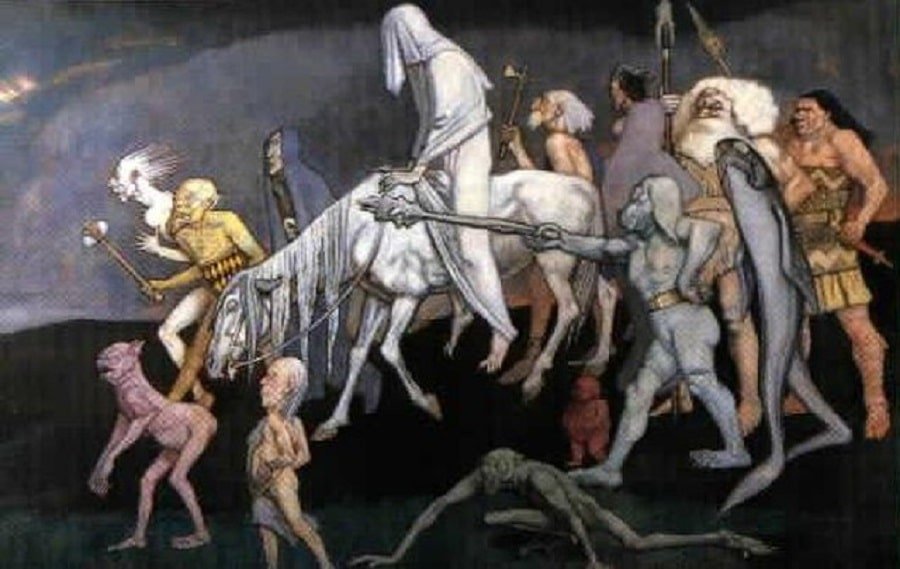
Legendary Items and Priceless Treasures
We all love a hidden treasure story, but X doesn’t necessarily mark the spot here, folks. Most legendary items in Celtic mythology are possessions of gods and heroes. That is, they are completely inaccessible to the common man.
More often than not, the legendary items of Celtic mythology were made for a specific person in mind. They were tailored to the strengths of their owners, with a bit of pizzazz here and there. For example, at least two of the Great Treasures of the Tuath Dé act as symbols of the Gaelic High Kings.
Most legendary items are nothing more than, well, legends. They spoke to the power and wisdom of those who possessed them. Most notably, these objects of myth acted as a means to justify the power one held.
(Of course, the protective Dagda had a cauldron that could feed his followers – and why shouldn’t the High King have a sword of light?)
- The Sword of Nuada (Claíomh Solais – The Sword of Light) †
- The Spear of Lugh (Gae Assail – The Spear of Assal) †
- The Cauldron of the Dagda †
- The Lia Fáil †
- Cruaidín Catutchenn, the sword of Cú Chulainn
- Sguaba Tuinne
- Orna
- The Dagda’s Uaithne
- Borabu
- The Caladcholg *
*The Caladcholg is thought to have been the inspiration behind King Arthur’s famous Excalibur
† These are counted as the Four Great Treasures of the Tuatha Dé Danann, made in the great island cities of Murias, Falias, Gorias, and Findias
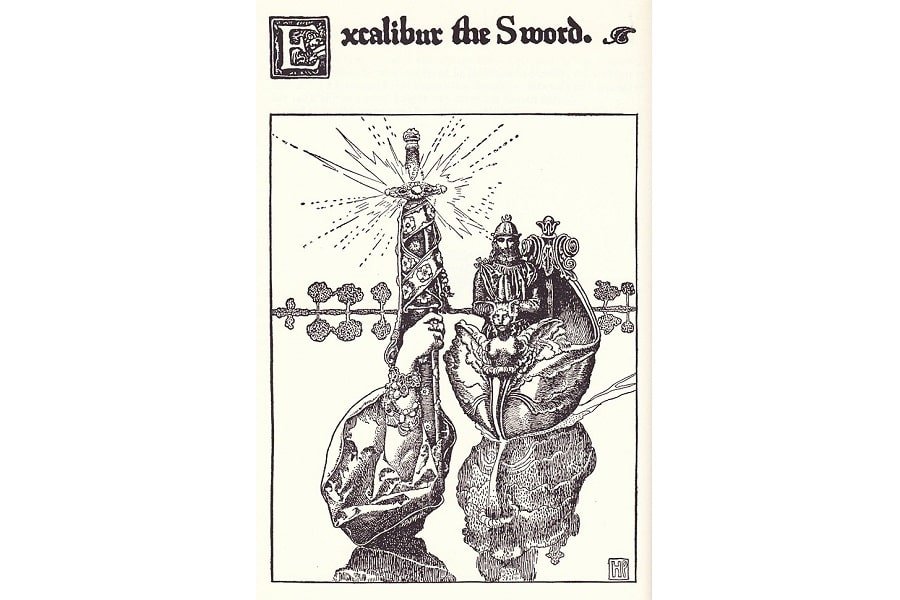
Famous Plays that Shine the Limelight on Celtic Legends
The history of theater in Celtic culture is largely unrecorded. It is thought that theater began to grow in popularity amongst former Celtic nations during the Middle Ages. Until that point, the theater was introduced to Celtic regions and Gaul through the Romans’ post-occupation.
In spite of the above, it is thought that theatrical aspects are present within isolated Celtic practices. In a web article titled Irish Folk Drama, the author Ruarí Ó Caomhanach suggests that the Wrenboys (prominent on December 26th’s Wren Day) could be vestiges of ancient rites. The claim is extended to the Strawboys and Mummers.
By comparing seasonal performances to ancient rites, we gain insight into Celtic tales and legends, limited though that may be. It could be said then that theatrical performances – namely reiterations – of major myths were common during festivals. Although we do not know the names of these ancient plays, remnants can be found in today’s world.
Famous Artwork Depicting Celtic Mythology
A majority of modern artwork pertaining to Celtic mythology features key characters of heroic myths. That’s right: more than the Celtic gods themselves, you’ll find art pieces featuring Cú Chulainn. However, such wasn’t always the case. Let’s start by saying that Celtic art history is vast.
By that, we don’t necessarily mean timeline-wise – although, that too. Celtic art includes anything from the archaic La Tène Culture to the famous Pictish art of Scotland. Most Celtic art displays various knotworks, zoomorphic, spirals, and greenery. There are also repeated subjects of heads, such as the Stone Head of Mšecké Žehrovice, which set fear into the hearts of Romans that thought the Celtic tribes were headhunters.
The Celtic artwork that has survived into today’s day and age is largely metalwork and stonework. They depict mysterious gods, such as Cernunnos on the Gundestrup Cauldron. Other artifacts, such as the bronze Battersea Shield and the vaunted Book of Kells offer further insight into the extensive art history of the ancient Celts.
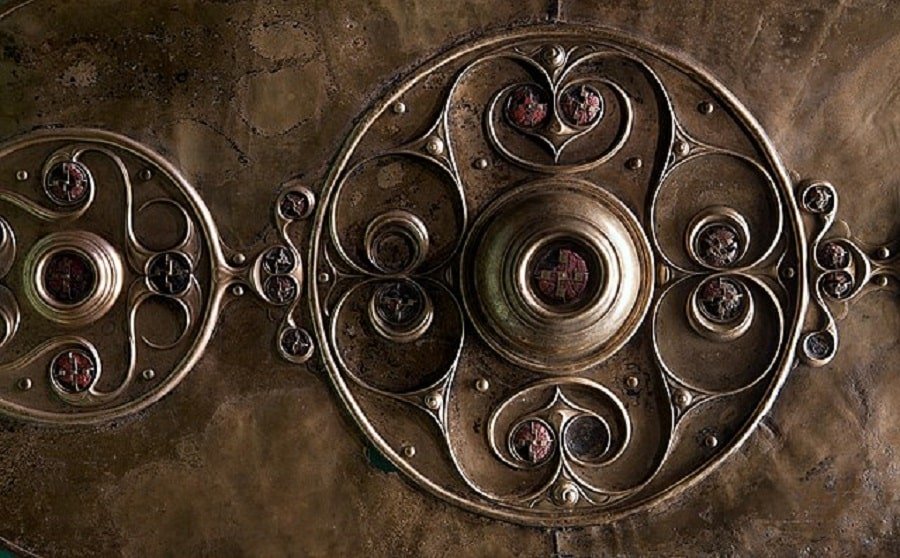
Famous Literature on Celtic Myths
The earliest Irish literature on the topic of Celtic myths was written by Christian scribes. While these individuals shied away from acknowledging many Celtic gods, they successfully retained important aspects of ancient Celtic legends. Known as fili in Ireland, these elite poets deftly recorded local lore and broader myth with significantly less hostility than their foreign counterparts.
- Lebor na hUidre (Book of the Dun Cow)
- Yellow Book of Lecan
- Annals of the Four Masters
- Book of Leinster
- Sir Gawain and the Green Knight
- Aidead Muirchertaig maic Erca
- Foras Feasa ar Éirinn
Notably, there is no literature available that details major Celtic gods and legends from the perspective of the druids. This is a big deal because the druids were largely responsible for retaining the beliefs of their people, their tribal gods, and deified ancestors. While we have an idea of which deities were worshiped, we’ll never know the entire scope.
Celtic Mythology in Modern Media and Pop Culture
There have been tons of attention on Celtic mythos in recent years within pop culture. Between shining the light on major Celtic gods and small-time myths, today’s media has reinvigorated interest in ancient Celtic history. Arthurian legends are among the most famed subjects of modern media, being showcased in television series like Merlin and Cursed. Also, how can we forget Disney’s 1963 The Sword in the Stone?!
Meanwhile, comic books certainly haven’t missed out on Celtic legends. Marvel has made leaps and bounds in introducing the Irish pantheon to American audiences, albeit in its quintessential, Marvel-y way. Some of the most famous Celtic-Irish gods have fought alongside everyone’s favorite thunder god, Thor, of the Norse pantheon. At least…in the comics.
Otherwise, Ireland-based Cartoon Saloon has released three animated films (The Secret of Kells, the Song of the Sea, and the 2020 Wolfwalkers) that handle Irish folklore and Irish legends. All three are beautifully animated with a fantastic soundtrack.
Regardless of the many, many different takes on Celtic mythology as it pertains to pop culture, we know one thing: it’s all very refreshing. For myths that were nearly lost to the ages, it is great to see them explored through a fresh lens.

Is Celtic and Irish Mythology the Same?
Irish mythology is a branch of Celtic mythology. Most of the time, Irish myth is what is discussed when reviewing Celtic mythology. Over time, the two have become somewhat synonymous. Despite this, Irish mythology is not the only branch of Celtic myth.
Other cultures that are a part of Celtic myth are the mythologies of the Welsh, English, Scottish, and Cornish. British mythology, particularly that pertaining to Arthurian legend, especially echoes motifs of Celtic mythology.
Since Celtic tribes were scattered throughout multiple “Celtic Nations” in ancient times, they would frequently interact with one another. Trade would have been extensive. More than material goods, tribes would have shared their respective religions, beliefs, and superstitions. Their proximity to ancient Gaul led to the inclusion of Gaulish gods in some tribes, which, due to Gallo-Roman relations, included aspects of Roman gods and goddesses.
After the conquest of Celtic lands by Julius Caesar, druidry was outlawed and the Celtic deities once worshiped were overthrown by Roman gods. Eventually, Christianity became the primary religion and Celtic gods made the transition from deities to Christian Saints.